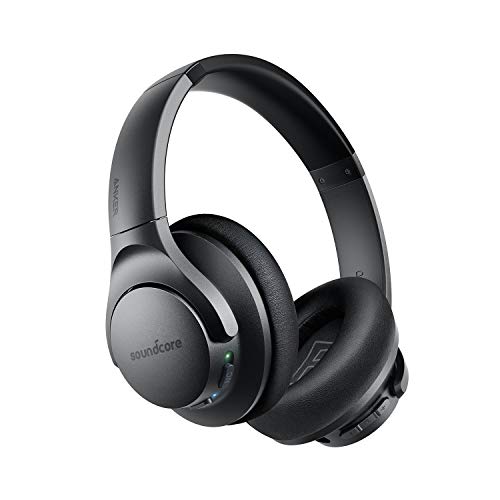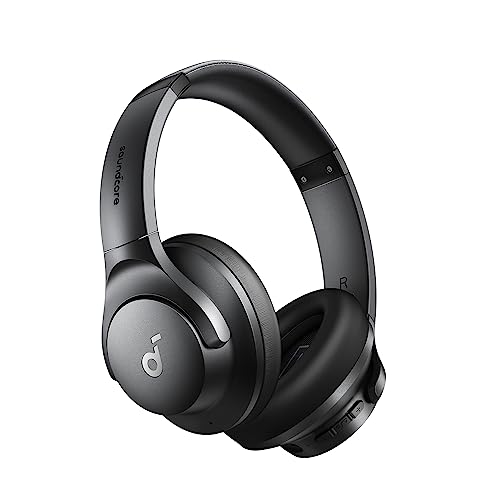 Headphones Noise Cancelling – How Do They Work?
Headphones Noise Cancelling – How Do They Work?
 Active noise cancelling headphones utilize electronics to monitor ambient sounds and invert their structure, creating anti-noise waveforms that block out peaks that are distracting. Constant noises such as the low hum that comes from trains or airplane engines are muffled while irregular sounds of varying bandwidths are muffled.
Active noise cancelling headphones utilize electronics to monitor ambient sounds and invert their structure, creating anti-noise waveforms that block out peaks that are distracting. Constant noises such as the low hum that comes from trains or airplane engines are muffled while irregular sounds of varying bandwidths are muffled.
With a headset that has headphones that block out noise it is possible to walk into a noisy cafe to make a phone call without your coworkers hearing.
1. Sound Quality
It isn’t a matter of whether they are noise cancelling or not however, the quality of the sound is still vital. In general, more expensive headphones will have superior sound quality, however this is not always the case.
The most popular type of headphones that reduce ambient noise are active noise cancelling (ANC). The technology makes use of built-in microphones that continuously listen to the surrounding environment around you, and later creates an inverse of outside noise. This is emitted through the speakers along with your music, and effectively cancels out ambient noise to let you focus on the music.
ANC can block low-frequency sounds such as the rumble from plane engines and train tracks. However, it will not remove all background noise. This is because high-frequency tones have shorter time-to-air distances than low-frequency sounds, and so can’t be cancelled as easily. A good pair of ANC can cut down on ambient noise and create sonic isolation that is perfect for listening podcasts or to music.
Some headphones also have a transparency mode that lets in some of the world around you so that you can hear what’s going on around you and engage in conversations without removing the headphones. Some models have multi-device compatibility, so you can listen to music from your smartphone and also make calls from your tablet.
If you’re looking for a headphone that is more acoustically isolated, then look into our range of noise-isolating headphones. These block out most of the ambient sounds by securing them to your ears, and do not require batteries to function.
Some of our in-ear headphones even feature smart functionality that learns about the places you visit over ear headphones with noise cancelling time, and automatically changes to a particular noise-cancelling profile to protect your hearing. They are popular among commuters on planes and trains, and can be used at home to reduce the sound of your neighbor’s lawnmowers. You can also set up distinct noise-cancelling settings for different environments using the Sony Headphones Connect app.
2. sennheiser noise cancelling headphones Reduction
Noise cancelling headphones cut down on the volume of ambient sound that you hear, which can help you concentrate on your music or phone calls. They use built-in mics to listen to the sounds of your surroundings. They then create waves that are opposite to those which are returned to your ears, reducing the volume. You’ll be left in your own private oasis of silence, except for whatever you choose to play through your headphones.
A headphone’s ability to reduce external noise is often portrayed in terms of decibels, but that number alone does not tell the full story. The truth is, the amount of ANC a pair of headphones claim to offer depends on how effective the headphones are and even two models that claim to offer the same amount of ANC could perform differently.
The high-end headphones’ electronics which use active noise cancellation are able to drain batteries quickly. It’s always a good thing to have a few spare battery packs for any headphones using this technology.
Generally speaking, the quality of a headset’s ANC is most evident in its ability to cut out low-frequency sounds like airplane and train engines, or your seatmate’s animated conversation (which can only be filtered out with passive isolation). There are also more advanced methods of using ANC and these are incorporated into some of the top headphones.
One example is Bose’s active Noise Cancelling that uses digital audio processing to adapt to your surroundings. The new Aware mode is a more advanced version of this, and will automatically adjust the ANC according to the sounds around you.
The best over ear headphones noise-cancelling earbuds for travel or commuting are those which block out background noise and allow you to hear important things like your alarm clock, phone calls and notifications from apps on your phone. These earbuds will also have the best ANC so that you can concentrate on your work while relaxing in noisy environments with soothing music without straining your ears. You can also utilize the EQ settings on your headphones to adjust how much of the outside world you want to let through.
3. Comfort
Noise cancelling headphones can be constructed in many ways, but the most effective ones create a sonic barrier between your ears and outside noise. If you’re at a busy airport or commuting to work, they block out ambient sounds and let you listen to your music in peace. This is a lot better than simply cranking up the volume on your headphones, which can damage your hearing.
There are two types: passive and Active. Passive noise reduction uses the physical shape of the headphones to block ambient sounds before they reach your ears. This requires earpads that fit snugly over your ear canals and the headband should not move when you move. Good quality headphones that are passively isolated are generally rated for up to 30 hours of use.
Active noise cancellation, also known as ANC, headphones use electronic components inside to detect ambient sounds and generate noise cancellation. The headphones accomplish this by generating an equal-amplitude sound that is 180 degrees off of phase. These waves cancel each other, leaving you in a peaceful, tranquil silence, minus the music you’re listening to. The technology behind ANC however, isn’t perfect. It is unable to handle high-pitched sounds such as the hum of an airplane engine, as well as sounds that change, such a the whooshing of tires on the highway.
If you’re planning to use headphones that have ANC on trains or planes, it’s best to check with the rail company or airline first. Certain airlines have requirements regarding headphones that are allowed onboard. These include ensuring headphones don’t disturb other passengers, or allow full access to entertainment systems.
If you’re going to the gym, you want a comfortable set of headphones that block out noise to keep up with your exercise and get you pumped. Bluetooth headphones with beats studio3 wireless noise cancelling over ear headphones connectivity are the best Noise cancelling headphones under £100 uk; ablue-global.com,. They should also come with features like the ability to make calls or listen to podcasts, as well as play music. Some headphones feature voice assistants that can answer questions regarding the weather or your workout schedule, while others have an alert mode that lets you put your hands on one ear and pause music.
4. wireless noise cancelling headphones Cancellation
The best noise cancelling headphones block out background noises such as an airplane engine or a car tire roaring along the highway. They can also block out chatter from your seatmate on trains. Noise-canceling headphones use microphones to pick up and analyze the sound waves that come from the outside world. They then create an inverse of those sound waves by sending a signal that’s the opposite of the unwanted noise that is emitted when it hits your ear. That cancels out the two sounds, so you can listen to your music or podcasts.
This process is called active noise cancellation (ANC) which works by detecting the sound that surrounds you with tiny microphones incorporated into your headphones’ earcups or earbuds. This information is fed to an onboard electronic processor that converts the sound waves into an anti-sound that’s created by emitting two identical signals – one that’s a trough when it’s hitting your ear, and another that’s a trough. The peak and troughs are canceled out, and you’ll hear nothing but your music or other audio.
Some headphones use digital ANC and others use the combination of active and passive noise cancellation to give you the best results. The higher quality the headphones, the better their ANC is going to be.
Noise cancelling headphones can help reduce ambient noises however they aren’t perfect. They’re especially helpful against constant noises like jet engines or the hum of trains or traffic, but they will not eliminate all the high-frequency noises from your coworkers talking in the breakroom or your seatmate’s laughter on the plane.
Additionally, you’ll want to be aware of the volume you’re listening to. Both the U.S. Environmental Protection Agency and the World Health Organization recommend keeping your music or other audio at 70 decibels or less to help prevent hearing loss. Most manufacturers have moved toward all-purpose headphones that can be used for all types of listening So, look for headphones that are designed to balance audio quality with noise cancellation as well as other features you may want. You should also check how the headphones fit on your neck and ears since this will affect how comfortable they feel and if they can shield your ear from external sounds.